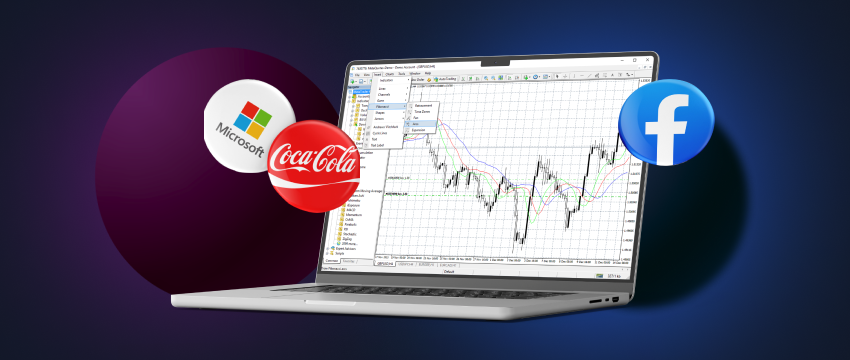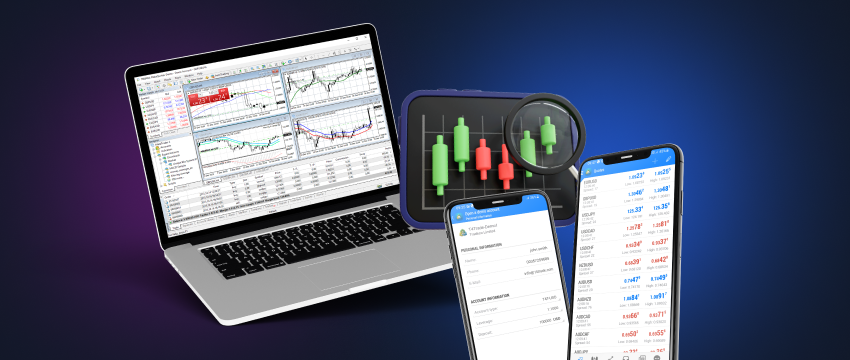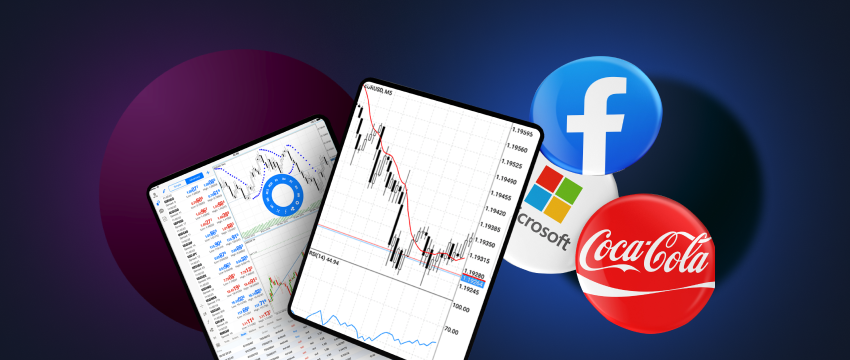CFDs are popular instruments for trading stocks. This is because they allow the trader to speculate on the price movement of the stocks without having to own the underlying asset. In this blog, we’ll explore whether trading stock CFDs is profitable.
The risks inherent to stock CFD trading
Stock CFDs allow you to go both long (buy) or short (sell) while speculating on a price rise or fall respectively. However, while also profitable, stock CFD trading carries significant risk, regardless of what the underlying asset is. This stands true for stocks, forex, commodities, indices, etc. The level of profit earned in stock CDF trading is largely dependent on one’s experience, skills, market conditions, and how much risk you’re willing to incur. But let’s look at some key points more closely.
CFD and stock volatility and the factors that drive price movements
For one, CFD trading is highly volatile. As we’ve mentioned, stock CFD trading entails speculating on the price movements of underlying stocks. If your stocks of choice are highly volatile, the potential for making a profit is as high as the risk of significant losses. Stock volatility can be attributed to factors like:
- The release of earnings reports by the company whose stock underlies the CFD.
- News related to the company or the industry that the company operates in, e.g., mergers & acquisitions, new product releases, regulatory changes, etc.
- Investor sentiment and perception of the value of particular stocks may drive price movements considerably.
- General market conditions also cause aggressive price movements, be this due to geopolitical tensions, war, economic releases, etc.
- Ketika suku bunga rendah, pasar saham mungkin memiliki aktivitas yang lebih besar karena lebih banyak orang dapat berinvestasi di saham dan saham untuk mencapai pengembalian yang lebih besar daripada menyimpan uang mereka di rekening bank.
CFDs allow for trading with leverage
Leverage is a double-edged sword. On one hand, it allows a trader to open and handle larger trades with a smaller amount of capital. This increases trading opportunities and potential profit. On the other hand, leverage can amplify capital losses substantially. Learning how to manage leverage properly is key to safeguarding your money. This involves implementing an effective risk management plan that incorporates stopping loss and taking profit orders to limit potential losses.

Having a well-defined trading strategy in place
As with any type of trading, to increase your potential for making a profit from stock CFD trading, you will need a well-planned trading strategy in place. The trading plan should be comprised of several key components:
- Clearly defined goals. You’ll fumble about without real focus unless you know what you’re working towards. This equals disaster. Stipulate your objectives in words and build a trading plan aligned with those goals.
- Risk management rules. An optimised strategy is one that incorporates the rules by which you will trade. Set a stop-loss order to prevent large losses in the case a stock’s price moves adversely. Consider using a take-profit order that specifies the exact price at which to close an open stock CFD position. Ensure you are using leverage wisely. Think about diversifying your portfolio to spread risk as well.
- Position sizing. Your strategy should clearly define how much capital you will allocate to a single trade. While this will give you better control over your budget, it must also align with your risk tolerance.
- Ongoing learning. In your attempt to maximise profits, ensure you stay ahead of market trends, industry advancements, news, etc. Financial markets are fickle, they constantly evolve and unless you keep yourself informed and educated, you may fall behind, resulting in unexpected losses. Don’t let arrogance get in the way of continuous education. Make this a pivotal component of your overall trading strategy.
The importance of trading psychology
The ability to maintain emotional discipline plays an integral part in trading. Emotive trading driven by feelings of fear, greed, impulsion, etc., has the power to lead to adverse trading outcomes. The first step in managing your emotions is recognising your triggers and biases.
Avoid trading when you are upset or angry. You need a clear head to be able to make rational decisions. Work on managing your behaviour and be mindful of what you’re feeling before entering or exiting a trade. If you don’t trust yourself enough to maintain composure, consider automated trading.
Automated trading is a handy tool to have in your arsenal. Simply put, this form of automation makes use of Expert Advisors (otherwise known as trading robots) to open and close positions based on a set of predefined criteria. You can stipulate these criteria beforehand, and leave the trading robots to execute your trades. This removes the emotion from trading, increasing your chances of trading success.
The trick is to stick to your plan (to the rules), even if you’re tempted to make changes. Don’t fall into the temptation of overtrading or become overly greedy. Consistency is key.

Education and preparation
As already mentioned, learning is an ongoing endeavour when it comes to stock CFD trading. The most successful traders are typically those who stay informed, consume information continuously, and strive to widen their scope of knowledge.
This can be achieved in many different ways. Some of the most popular forms of educational resources include blogs, books, webinars, videos, and podcasts. All of these provide crucial information on trading-related topics for all levels of traders, regardless of expertise. In addition, traders may also attend seminars or in-person courses to get a practical understanding of trading in the company of like-minded peers.
Seminars and courses provide a brilliant way for different traders to come together to exchange different ideas, information, tips and insights. Another important learning tool includes a demo trading account which provides a trader with a simulated trading environment to practice stock CFD trading.
A demo account also offers a trader the opportunity to test their trading strategy using virtual funds. This safeguards the trader’s actual money until they’ve built up enough confidence and expertise to move to a live trading environment. In addition, a demo trading account also allows a trader to learn more about technical analysis, understand how to read charts and monitor trends in real-time. This is valuable training in how to make informed trading decisions once you start trading with real funds.

Trading stock CFDs with T4Trade
With T4Trade, you can trade CFDs on some of the most popular company stocks. This includes Nike, Microsoft, Google, etc. You can also automate your stock CFD trading with the broker’s innovative MetaTrader 4 system, or catch current trends with clear price charts and analysis on their web-trader platform.
T4Trade provides its traders with a flexible and secure trading environment, where they can enjoy competitive spreads, flexible leverage, and fast withdrawals and deposits. Traders can trade more than 300 instruments across 6 asset classes, such as stocks, futures, indices, forex, metals and commodities. T4Trade also has multiple accounts for traders to choose from.
These accounts cater to the different needs of global traders, enabling you to pick one that best fits your goals and where you are in your trading journey. Their high-quality 24/5 multilingual customer support team is also available to assist via telephone, email or Live Chat.
Disclaimer: This material is for general informational & educational purposes only and should not be considered investment advice or an investment recommendation. T4Trade is not responsible for any data provided by third parties referenced or hyperlinked, in this communication.




